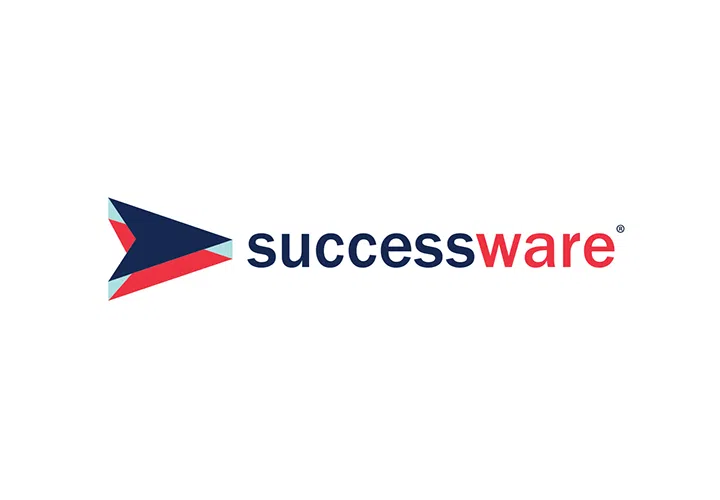Stay Ahead of the Recovering Economy
Everyone in the construction industry knows the story of the past decade — things were really hot, and then came the crash. The challenges companies faced during the recession are disappearing, but as the economy starts to recover, there are warnings that the uptick may be more turbulent than the downturn.
Throughout this economic story, the construction technology sector progressed significantly. Specifically, technology now exist that empower organizations to fight through financial risks and emerge from this economic recovery period larger and stronger than before.
It’s Getting Better
The United States economy, and the construction economy specifically, is definitely getting better. There’s no doubt that month-over-month the industry is gaining jobs, spending is going up and indicators are positive for a full recovery.
Nevertheless, full recovery always appears just out of reach. Construction economists raced into the new year promising strong growth, but the market failed to reach those expectations. Now, again, construction economists are leveraging the positive economic news to promise that 2015 is going to be the magical year.
But, will a recovered economy be nothing but good news for HVACR businesses? The answer, surprisingly, may be no.
According to research conducted by Thomas Schliefer, PhD, the risk of contractor default is three times greater in a recovering economy than in a downturn economy. Bankruptcies, defaults and insolvencies should be expected at three times the rate they occurred during the 2008-2009 period.
This should be sobering news.
In light of this risk, HVACR contractors must confront three questions:
- Is your business at risk of insolvency?
- How will defaults by other companies affect your business?
- What can be done to mitigate these risks?
Digging into these questions requires an understanding of why recovering economies present risk.
Recovery is Risky
It’s natural for a business to associate a strong economy with good times, and it’s counter-intuitive to allege that an economy swinging up is more problematic than an economy swinging down. Understanding this paradox requires that a strong economy is distinguished from a recovering economy.
Schliefer’s research is not suggesting a recovered economy is bad, or inherently more risky. It’s the journey from bad to good that is fraught with peril, for many sensible reasons.
Primarily, there is the issue of cash. The economic downturn and recession depleted many companies’ cash reserves. While most companies have conjured up ways to survive in the new status quo, a recovering economy demands cash in ways the downturn economy never did. Now, as work opportunities increase, cash is required to meet the sudden high demand for work.
Without cash in reserve, companies forced to look to the market for capital may find providers still gun-shy about investing in the construction sector. Further, because the industry scaled down over the past five years, ramping up to work on an increased volume of opportunities is more expensive, because the workforce supply is strained. The risk inherent in a recovering economy is a scalability problem.
In the current post-recession economic climate, capital providers are skeptical, cash reserves are weak and the workforce is diminished. The construction industry is only prepared to satisfy a weak demand.
Rapidly growing demand throws the “scaled down” industry into a high-growth high-risk situation, which results in risk for HVACR contractors.
On the one hand, there is company specific risk: Will I have the capital and work force resources to handle the new volume of work?
On the other hand, there is project-wide risk: Defaults and insolvencies by other parties on a construction project cause problems for seemingly unrelated parties, even if those parties are prepared for their own growth.
The good news for HVACR contractors is most of these risks can be predicted and controlled. Innovative construction technology offerings now take direct aim at mitigating the construction industry’s financial and default risks.
Cloud Technology in 2015
Though the construction economy slowed down, construction technology development did not. The 2015 construction technology landscape would be unrecognizable to companies at the onset of the recession in 2008.
This change puts HVACR businesses in a much better position to mitigate their risks and successfully surf the wave of the oncoming recovery.
So, what’s different about 2015’s technology landscape? One word: cloud.
While easy to utter, the term cloud is overused and vastly misunderstood. Nevertheless, it’s the driving force behind the differences and advances of construction technology in 2015 compared to 2008.
The term cloud is simply explained as the elimination of all in-house servers and desktop installed software. In 2008, if a company wanted to install an ERP platform or accounting package, they would need to host it on their server and install something on each individual machine to enable access to data on the server. This required updates, and demanded significant technical support.
In the cloud, however, those issues don’t exist. An Internet browser is the only requirement to access any software platform — no server, no installing applications, no technical support.
This is a simple concept, but the implications are significant and often overlooked. There are two high-level consequences of the shift to the cloud: data exchange and software democracy.
Data Exchange
One overlooked consequence of the cloud is data is not imprisoned by a company’s own server architecture. Instead, the data is in the cloud.
Irrespective of any potential security problems presented by this shift, the real focus should be on how this enables companies to integrate various software applications through APIs and other web service connections.
The value of being cloud-based in this respect is enormous. Exchanging data from one application to another extends the capabilities of every platform, and enables companies to really leverage the nuances of every software product.
Further, meaningful experimentation with artificial intelligence and predictive analytics is only possible through data exchanges enabled by cloud technology.
Software Democracy
Another of the cloud’s relatively unnoticed consequences is a lower barrier to enter the software market. This improves the business case to build niche applications, and has resulted in very interesting and useful software products specifically tailored to help with cumbersome workflows and processes.
There are a lot of cloud-based tools available to empower contractors to get all of the good from the recovering economy while avoiding the bad.
Process Automation
Through technology, HVACR contractors have the opportunity to automate and optimize business process and workflows that can otherwise strain resources. There are three benefits to improving processes with technology.
First, it frees up a company’s workforce to focus on its core business rather than fumbling around with redundant tasks.
Second, and of specific interest in a recovering economy climate, it positions the company to scale. A technology-enabled process can be scaled easily, but non tech-enabled processes require hiring, training and more.
Third, and perhaps most importantly, it empowers the company to optimize and leverage business processes.
For example, invoicing can be a pain that increases with more business. Cloud-based billing applications automate this process and removes it from the company’s tasks. This positions the company to scale, and more importantly, enables companies to get more out of their invoicing.
Automating the process with technology has obvious benefits and ROIs, but the really significant ROIs come from the technology enabling companies to leverage the invoicing process to impact working capital.
Default Risk Management
Not only can technology optimize business processes, it also strikes right at the heart of the risks presented by a recovering economy. Technology can provide a method by which a company can mitigate the risk of insolvencies and defaults by other companies. While this is tricky, many quality products assist with this problem.
By enabling organizations to use data to understand project risks, and stay in a secured position, the risk presented by a default or insolvency situation is greatly reduced.
Relationship Management
Finally, the construction industry, like most industries, is all about relationships. This is good news, because one of the most exciting technology advancements of the past decade has been in the development of customer relationship management (CRM) products. While there are thousands of CRM-type products out there, all of these products all share a similar goal: to give users control over, and insight into, the customer record.
The HVACR industry presents a unique challenge for CRM products because the customer relationship is complicated. The relationship may be a traditional buyer/seller type relationship, but more often it is just part of a multi-layered cake where multiple participants must work with each other to complete a multi-partied project. CRM type needs are needed at both the jobsite, and in the back office.
The back office can be enabled through CRM-type products as well, and interestingly, it is the business process and workflow software applications that are developing these products.
The economic recovery is inevitable and welcome, but so are the challenges presented by recovering economic landscapes. Understanding these risks is important, but it is perhaps more important for HVACR contractors to leverage newly available technology to offset these risks, and fully benefit from the recovering economy’s opportunities.




